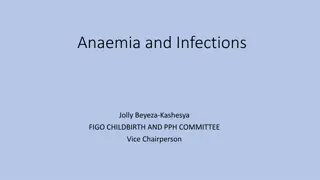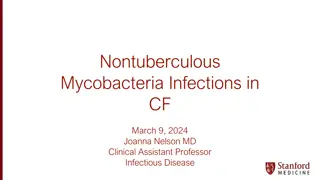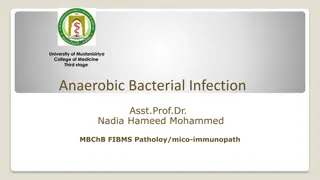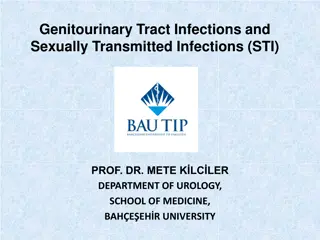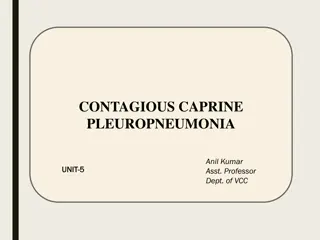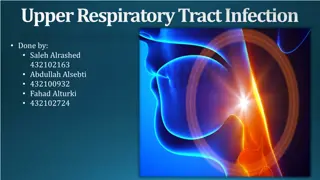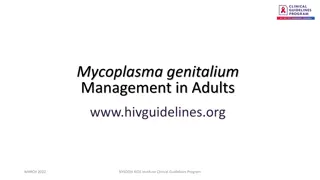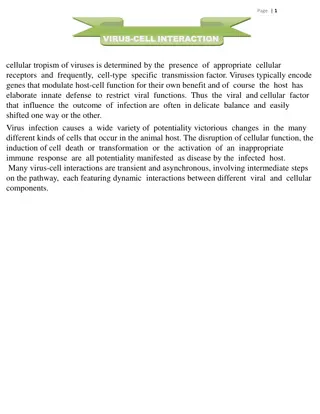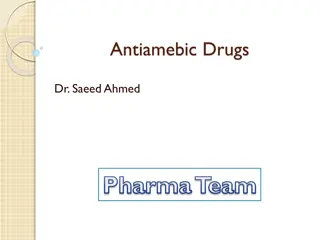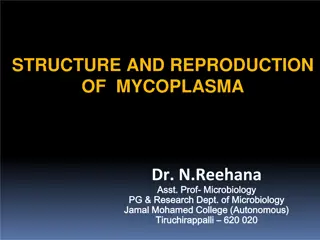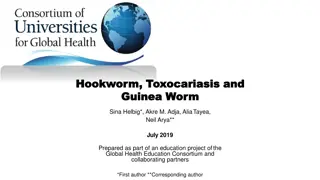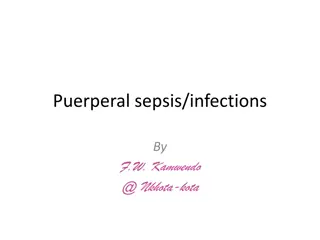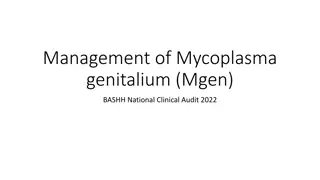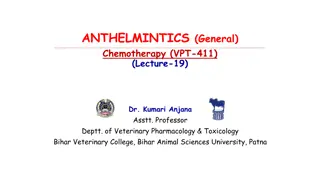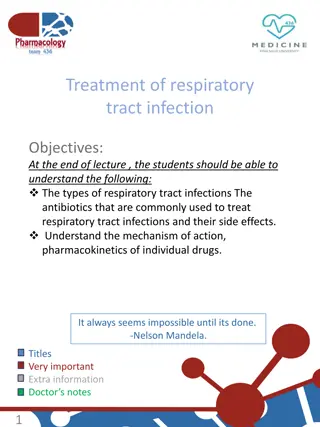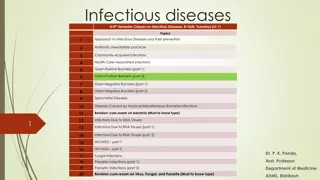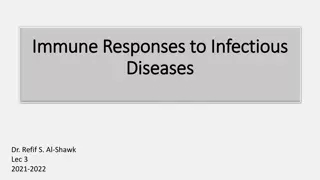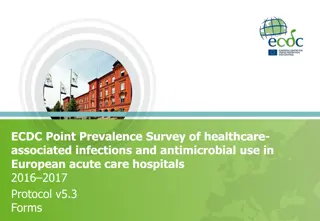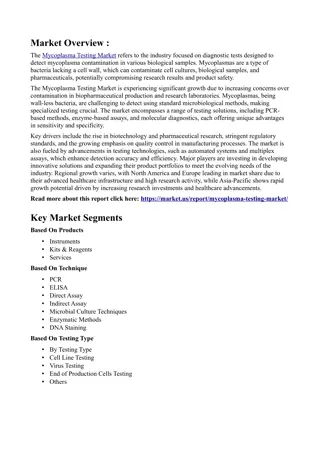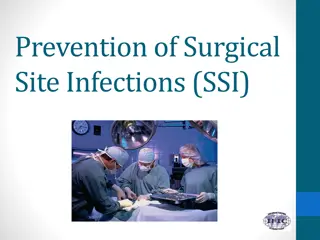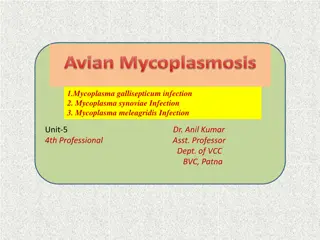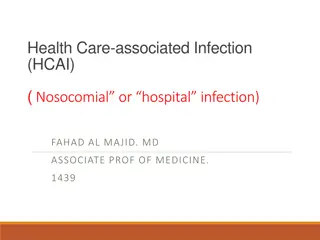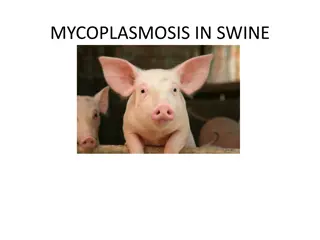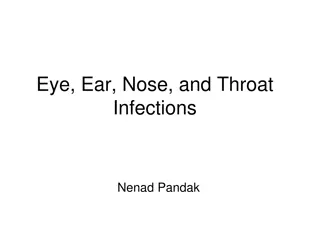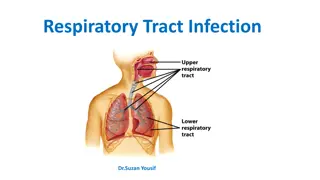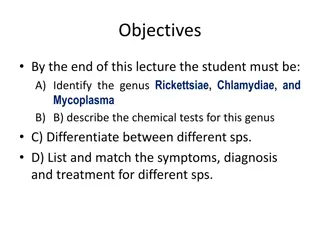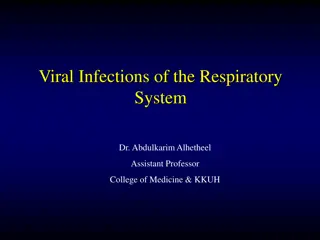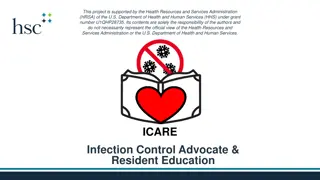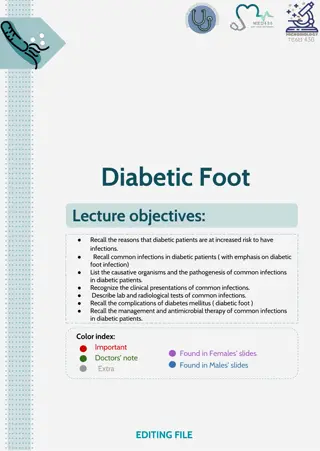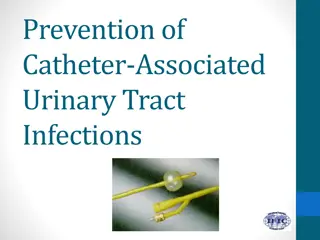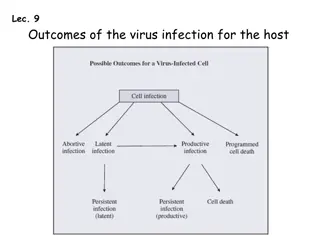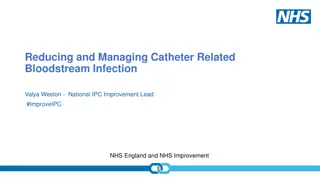Anaemia and Infections in Relation to Health
Anaemia can result from various causes such as blood loss, increased destruction of red blood cells, and impaired production, often linked to infections and chronic diseases. Parasites, bacteria, and viruses play a role in the progression of anaemia, affecting the body's ability to produce and utili
3 views • 10 slides
Nontuberculous Mycobacteria Infections in Cystic Fibrosis
Nontuberculous mycobacteria (NTM) infections present a significant challenge in individuals with cystic fibrosis (CF). These infections are caused by over 200 species of atypical mycobacteria found in various environments. The CF-ID Clinic plays a crucial role in managing patients with multi-drug re
2 views • 25 slides
Estimation of Serious Mycoses Burden in Indonesia
This study estimates the burden of serious fungal infections in Indonesia, a country with rich biodiversity and limited medical mycology facilities. The data indicates a high prevalence of opportunistic infections in AIDS patients and TB cases, with Candidiasis and Cryptococcosis being significant c
2 views • 29 slides
Anaerobic Bacterial Infections: Overview and Clinical Implications
Anaerobic bacterial infections are caused by bacteria that do not require oxygen for growth, posing challenges in diagnosis and treatment. This article delves into the types of anaerobic bacteria, their role in human infections, and common clinical presentations such as abscess formation. Gram-negat
2 views • 24 slides
Overview of Genitourinary Tract Infections and STIs by Prof. Dr. Mete Kılcıler
Genitourinary Tract Infections and Sexually Transmitted Infections (STIs) are common conditions affecting both men and women. This article, presented by Prof. Dr. Mete Kılcıler from the Department of Urology at Bahçeşehir University School of Medicine, delves into the various aspects of UTIs, in
2 views • 47 slides
Contagious Caprine Pleuropneumonia in Goats
Contagious Caprine Pleuropneumonia is a severe and frequently fatal respiratory disease affecting goats in India. Caused by Mycoplasma capricolum subsp. Capripneumoniae, it is not transmissible to cattle or sheep. The disease spreads through close contact and inhalation of respiratory droplets, with
0 views • 6 slides
Differentiating between Viral and Bacterial Infections in Upper Respiratory Tract
Understanding the distinction between viral and bacterial upper respiratory tract infections is crucial for effective management and treatment. This article discusses key differences in symptoms, diagnostic methods, and treatment approaches to aid in accurate differentiation between the two types of
2 views • 87 slides
Fungi Diversity and Infections in Microbiology
Explore the world of fungi and fungal infections in this foundation block of microbiology. Learn about medically important yeasts, mold fungi, major fungal diseases, antifungal agents, and infection acquisition methods. Dive into hypersensitivity reactions, mycotoxicoses, and various types of fungal
1 views • 19 slides
Mycoplasma Genitalium Management Guidelines for Adults
This guideline aims to assist clinicians in recognizing common clinical manifestations of M. genitalium infection, providing evidence-based recommendations on screening, diagnostic testing, and treatment. It emphasizes not routine screening for asymptomatic individuals but testing for those with per
1 views • 9 slides
Virus-Cell Interactions and Infections
Viral infections exhibit diverse cellular tropism based on receptor interactions, impacting cell function through modulation and potential host defense responses. Infections can lead to various outcomes, from cell death to persistent or latent states, with nuanced effects on cellular behavior. Diffe
0 views • 8 slides
Antiamebic Drugs: A Guide to Managing Protozoal Infections
Protozoal infections, such as amebiasis, are a significant concern globally. In underdeveloped regions and beyond, these infections pose challenges due to inadequate sanitation and hygiene practices. Antiamebic drugs are essential for treating conditions like amebiasis, caused by Entamoeba histolyti
0 views • 40 slides
Mycoplasma: Structure, Reproduction, and Characteristics
Detailed exploration of Mycoplasma covering its structure, reproduction, and general characteristics. Discusses the ultrastructure, species like Mycoplasma pneumonia and Mycoplasma hominis, and their unique traits such as lack of cell wall, pleomorphism, and reproduction methods. The article also to
0 views • 14 slides
Overview of Hookworm, Toxocariasis, and Guinea Worm Infections
These infections are significant global health issues affecting millions of individuals worldwide. Hookworm infection, a leading cause of iron-deficiency anemia, is prevalent in tropical and sub-tropical regions. Risk factors include poor sanitation and walking barefoot on contaminated soil. The bio
0 views • 46 slides
Mycoplasma: Characteristics, History, and Impact
Mycoplasma, the smallest self-replicating bacteria, lack cell walls and pose challenges in research due to their contamination of cell cultures. Learn about their unique characteristics, historical background, differences from bacteria, Chlamydia, and viruses, and the importance of diagnosing and tr
0 views • 79 slides
Prevention and Management of Puerperal Sepsis and Infections
Puerperal sepsis and infections are serious conditions affecting women postpartum. Puerperal sepsis is characterized by specific symptoms, while puerperal infections are more general. Prevention includes antenatal care, strict intrapartum hygiene practices, and timely interventions. By following gui
2 views • 8 slides
Management of Mycoplasma genitalium (Mgen) - BASHH National Clinical Audit 2022
This clinical audit focuses on the management of Mycoplasma genitalium (Mgen) according to the BASHH guidelines. The aim is to assess adherence to the guidelines and the current use of Mgen testing. Methods include surveying local arrangements for Mgen management and conducting case-note reviews of
0 views • 27 slides
Anthelmintics: Drug Therapy for Parasitic Worm Infections in Veterinary Medicine
Anthelmintics are essential drugs to combat parasitic worm infections in animals. They work either by killing (vermicide) or expelling (vermifuge) the worms, reducing worm burdens and controlling infections. This comprehensive overview covers different aspects of anthelmintics, including their prope
2 views • 34 slides
Treatment of Respiratory Tract Infections: Antibiotics and Management
This lecture covers the classification of respiratory tract infections and the antibiotics commonly used to treat them. It highlights the types of infections caused by viruses and bacteria, along with their respective treatments. The mechanism of action and pharmacokinetics of antibiotics, such as p
0 views • 7 slides
Infectious Diseases 4/5th Semester Classes: Approach & Prevention
Infectious Diseases class focuses on various topics including Antibiotic Stewardship Practices, Community-Acquired Infections, Gram-Positive and Gram-Negative Bacteria, Spirochetal Diseases, Diseases Caused by Bacterial and Viral Infections, HIV/AIDS, Fungal and Parasitic Infections. The class also
3 views • 30 slides
Immune Responses to Parasitic Infections and Evasive Strategies by Protozoan and Helminth Parasites
Parasitic infections pose complex challenges to the immune system due to the diverse nature of parasites, including protozoans and helminths. Protozoan parasites move between arthropod vectors and mammalian hosts, requiring both humoral and cell-mediated immune responses. Meanwhile, helminths, as mu
0 views • 15 slides
ECDC Point Prevalence Survey of Healthcare-associated Infections and Antimicrobial Use in European Acute Care Hospitals 2016-2017 Protocol v5.3 Forms
This protocol outlines the data collection form for the ECDC Point Prevalence Survey focusing on healthcare-associated infections and antimicrobial use in European acute care hospitals during 2016-2017. The detailed form covers various aspects such as hospital information, infection control measures
0 views • 8 slides
Mycoplasma Testing Market
In 2022, the Global Mycoplasma Testing Market was valued at USD 766.63 Million and is expected to grow to USD 2338 Million in 2032. Between 2023 and 2032, this market is estimated to register a CAGR of 12.11%.\n\n
0 views • 3 slides
Prevention of Surgical Site Infections: Key Factors and Recommendations
Surgical site infections (SSIs) are a significant concern in healthcare settings, with 25% of healthcare-associated infections being SSIs. They are preventable, but still pose challenges due to multifactorial causes. Risk factors include uncontrolled diabetes, obesity, smoking, and length of preoper
2 views • 28 slides
Overview of Mycoplasma Species and Contagious Bovine Pleuropneumonia
The Mycoplasma genus, including Acholeplasma and Ureaplasma, consists of Gram-negative bacteria with unique characteristics such as lacking cell walls. Mycoplasma species are responsible for causing various diseases in livestock, including bovine and caprine pleuropneumonia. Contagious Bovine Pleuro
1 views • 13 slides
Mycoplasma Infections in Avian Species
Mycoplasma infections, caused by species like Mycoplasma gallisepticum and Mycoplasma synoviae, are common in poultry, particularly affecting turkeys and chickens. These infections lead to respiratory issues, sinusitis, and reduced production rates. Learn about transmission, clinical findings, and v
0 views • 13 slides
Health Care-associated Infections (HCAI) in Hospital Settings
Health care-associated infections (HCAI), also known as nosocomial or hospital infections, are infections that occur in patients during their hospital stay or after discharge. These infections can result from various sources, including colonization by microorganisms and exposure to contaminated envi
0 views • 48 slides
Mycoplasmosis in Swine
Mycoplasmosis in swine is caused by Mycoplasma species, with Mycoplasma hyopneumoniae as the most common. It leads to chronic bronchopneumonia and can suppress the immune system, allowing other bacteria to proliferate in the lungs. The disease is characterized by slow growth in culture, adhesion to
0 views • 48 slides
Overview of Eye, Ear, Nose, and Throat Infections by Nenad Pandak
In this comprehensive guide by Nenad Pandak, various aspects of eye, ear, nose, and throat infections are discussed. The content covers infections such as conjunctivitis, keratitis, pharyngitis, otitis media, and sinusitis. It also delves into causes, clinical presentations, and diagnosis of these i
0 views • 68 slides
Respiratory Tract Infections: Causes and Prevention
Respiratory tract infections are commonly caused by viruses, bacteria, rickettsia, and fungi, leading to various health issues. These infections can be transmitted through droplets, droplet nuclei, and dust, emphasizing the importance of maintaining respiratory health through specific and non-specif
0 views • 34 slides
Implementing Test and Treat Pathway for Mycoplasma Genitalium in Men with Non-Specific Urethritis
This study focuses on implementing a test and treat pathway for Mycoplasma Genitalium (MG) in men with Non-Specific Urethritis (NSU) attending a GUM clinic. The aim is to determine MG prevalence among men diagnosed with NSU and measure clearance rates post-treatment. The testing pathway involves tre
0 views • 11 slides
Overview of Rickettsiae, Chlamydiae, and Mycoplasma
This lecture covers the identification, chemical tests, differentiation, symptoms, diagnosis, and treatment of Rickettsiae, Chlamydiae, and Mycoplasma. It explores the similarities and differences between Rickettsiae and Chlamydiae, as well as their characteristics, growth requirements, and examples
0 views • 38 slides
Viral Infections of the Respiratory System
Respiratory viral infections are common and primarily caused by viruses, leading to morbidity and time off work. They can range from mild upper respiratory tract infections to severe lower respiratory tract infections like pneumonia. Various viruses like influenza, parainfluenza, respiratory syncyti
0 views • 23 slides
Common Infections in Nursing Home Residents
Explore the causes, types, and impact of infections in nursing home residents while learning how to prevent and control infections. Discover common infections, factors contributing to infections, and resident rights in infection control practices.
0 views • 23 slides
Diabetic Foot Infections and Associated Risks
Diabetic patients are prone to infections, significantly impacting morbidity and mortality rates. Increased infection risk is due to both host-related and organism-related factors. Common infections in diabetic patients include skin and soft tissue infections, diabetic foot infections, respiratory t
0 views • 14 slides
Preventing Catheter-Associated Urinary Tract Infections
This presentation covers the prevention of catheter-associated urinary tract infections (CAUTIs) in healthcare settings. It highlights the significance of urinary tract infections, risk factors, preventive measures, and common microbiology involved. Key topics include the importance of urine collect
0 views • 34 slides
Lower Genital Tract Infections
Lower genital tract infections refer to various inflammatory conditions affecting the vagina, cervix, vulva, and surrounding areas. These infections can be caused by bacteria, viruses, or fungi, leading to symptoms such as abnormal discharge, itching, and pain. Proper diagnosis and treatment are ess
0 views • 44 slides
Outcomes of the virus infection for the host
The outcomes of virus infection in hosts can range from productive infections, latent infections, to abortive infections. Some viruses persist in hosts for long periods, potentially leading to cancer. The relationship between viruses and hosts involves an arms race, with viruses developing counterme
0 views • 10 slides
Managing Catheter-Related Bloodstream Infections in Vascular Access
Reduce and prevent catheter-related bloodstream infections in vascular access by addressing extraluminal infection sources and implementing strategies outlined in national drivers such as the NHS Long Term Plan and the Antimicrobial Resistance Action Plan. Recognize the importance of tackling antimi
0 views • 25 slides
Introduction to urine analysis
Urine analysis is a crucial test for detecting various health conditions, such as urinary tract infections and diabetes. Understanding the urinary system, urination process, and urinary tract infections is essential for effective management and diagnosis. Learn about the causes, symptoms, and implic
16 views • 31 slides
Cell Organization and Evolutionary Perspectives
Prokaryotic and eukaryotic cells are the basic units of all living matter. This article explores the differences in organization between these two cell types, their characteristics, and evolutionary relationships. From discussing cellular structures to the presence of endomembranes, mitochondria, an
0 views • 66 slides
